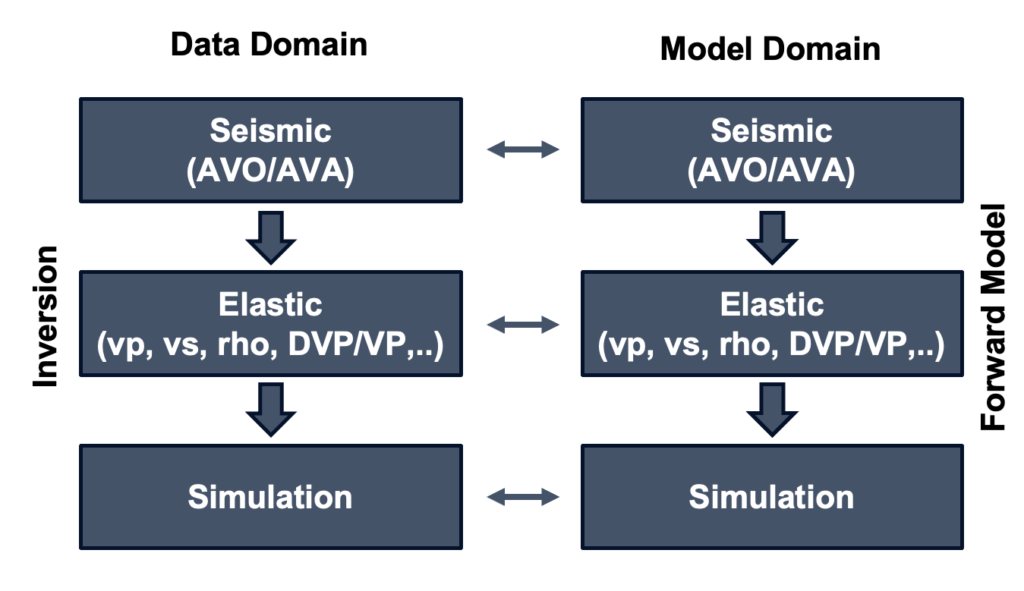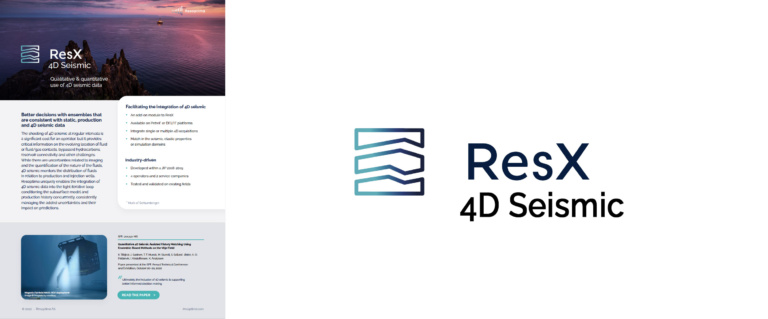Conditioning to 4D seismic data
The ResX 4D module enables a 4D seismic data history matching workflow. Developed in 2018-2019 in a JV involving 4 operators and 2 service companies, the ResX 4D module is unique in its flexibility to adapt to the specifics of each project as well as its openness to include third-party components. The module increases utilization of 4D data for reservoir characterization, allowing users to get a better understanding of reservoir connectivity, flow barriers and bypassed hydrocarbons.

Flexibility
The ability to select the response to be used offers the ability for the users to adopt the matching data best adapted to the project’s objectives. Likewise, the choice of domain offers flexibility. For example it is generally quicker to move an interpretation of measured data into the simulation space to make comparisons there, but if time and resources are available, simulator results can be processed and made available for comparison in the seismic domain.

Quantitative use of 4D seismic data in ResX
In the ResX objective function 4D seismic data is represented as a 2D surface. Multiple surfaces can be included, for example one per extraction window and per time-lapse interval. When used in an ensemble based study, the output of the 4D workflow is an ensemble of reservoir models that are consistent with static, production and 4D seismic data, while capturing uncertainty. This leads to better decision-making for assets employing 4D seismic data. Putting you in a better position to increase higher ultimate recovery.

Qualitative use of 4D seismic data in ResX
A vital part of the ResX 4D module is the qualitative ensemble analysis visualization and the QC tools that are available. Perform statistical analysis of the objective function and visually analyze 2D surfaces and 3D properties to quickly identify areas of interest. Use interactive filters to pinpoint areas where the prior model assumptions should be revisited.
See the SPE paper “Quantitative 4D Seismic Assisted History Matching Using Ensemble-Based Methods on the Vilje Field” one One Petro here



